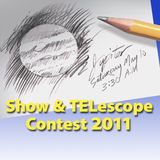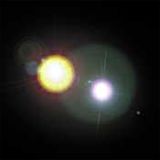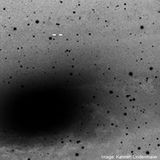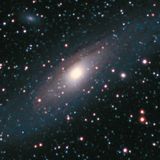
The first confirmed discovery of a planet revolving around a star other than the Sun was made less than 30 years ago by Canadian astronomers Bruce Campbell, G. A. H. Walker, and S. Yang. Since then, more than 200 more so-called exoplanets have been discovered. Most of the stars with known planets are fairly faint, and known mainly by their catalog number.
One of the most interesting has been the planet HD209458b, which revolves around the 8th magnitude star HD209458 in the constellation Pegasus. This planet, nicknamed Osiris after the Egyptian god, was discovered in 1999, and was the first known exoplanet to transit its star regularly. In other words, its orbit is such that the planet passes between us and its star once a "year," its year being 3.5 Earth days long. Its spectrum has been studied by the Hubble Space Telescope, and is known to contain water.
Like all stars except the Sun, HD209458 is too far away to show a disk, appearing in the largest telescopes as a point of light. But, simply because it?s known that this star has a planet with water, there is a real fascination of seeing it with our own eyes and, with the help of Starry NightŪ and a small telescope, this is quite possible.
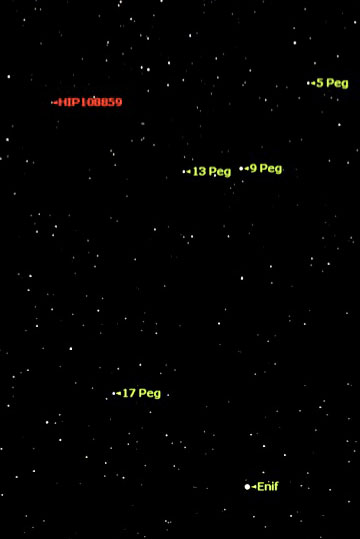
HD209458 is also known as HIP108859, and it is under that catalog number that you can find it in Starry Night. It is visible at present in the morning sky, between the stars 9 and 33 Pegasi in one of the "legs" of the winged horse Pegasus. You can find it easily by starting at the bright star Enif, Epsilon Pegasi. Sweep 7 degrees north to find 9 Pegasi, 4th magnitude. Look for 5th magnitude 13 Pegasi a little over a degree east of 9 Pegasi. From there, HIP108859 is 3.5 degrees northeast. This star is very similar in size and color to our Sun, but is located 154 light years away.
How to Mark Stars With Extrasolar Planets
Starry NightŪ Tip for Pro and Pro Plus version 6 users
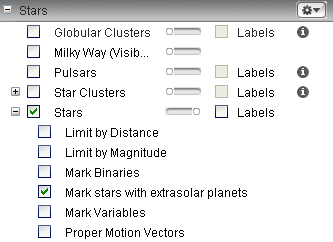
- Open the Options Pane and expand the Star Options Layer.
- Check the "Mark Stars with Extrasolar Planets" box.
- Circles will appear around the stars that are known to harbor planets.
- If you turn on markers for extrasolar planets, the star's Info pane will include information about the extrasolar planet, such as the planet?s mass and distance from its central star.
May 2007
Geoff has been a life-long telescope addict, and is active in many areas of visual observation; he is a moderator of the Yahoo "Talking Telescopes" group.






